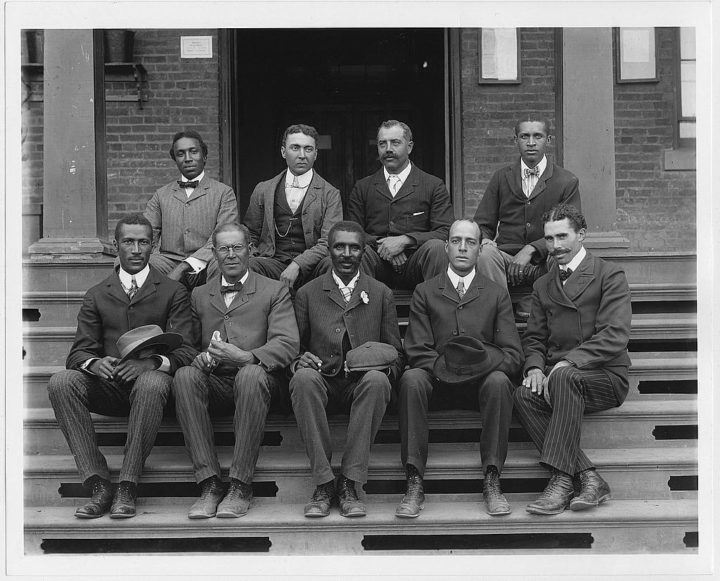The Father of the Peanut Industry
Published on 15th October 2018
This week during Black History Month we take a look at an American hero, a former slave who, through his extensive botanical knowledge, revolutionised the farming industry in America.
From traumatic upbringings…
George Washington Carver was an American chemist and inventor. He is most famously known for actively promoting alternating crop techniques to prevent soil depletion. George was born into slavery in Diamond Grove, Missouri. The exact date is unknown, but has been estimated as being c. 1864. At a few months old George, his sister and mother were kidnapped. Moses Carver, George’s slave owner, paid his neighbour to find them but only George was found. George’s older brother James was then the only biological family he had, as his father had died in an accident before George was born.

After the abolition of slavery, Moses and his wife Susan raised George and James as their own, teaching them both to read and write. As none of the schools in the area allowed blacks to attend, George Carver left home, at age 11, to attend school in Neosho. He eventually moved to Kansas to continue his schooling and earned his diploma from Minneapolis High School.
Moving on to higher education was difficult; George applied to several colleges and was only accepted by Highland University, who retracted their offer once they knew he was black. During this time he homesteaded a claim, where he conducted biological experiments and compiled his geological collection.
George was interested in both arts and science. While studying art and music at Simpson College (a Methodist school that allowed blacks to attend), his talent for drawing plants and his interest in botany prompted his teacher, Etta Bud, to suggest that he enrol in a botany program at Iowa State Agricultural College—now Iowa State University. George Carver was the first black student to attend this college in 1891, in which he excelled at his studies. After finishing his bachelor’s degree he was persuaded by his professors to stay and attain his master’s.
…to saving the lives of the poor and having friends in high places…
After graduating in 1896, George was approached by Booker T. Washington to run the agricultural department at Tuskegee institute (now Tuskegee University). The Institution was set up by Booker T. Washington to focus on training African Americans in agricultural pursuits.

Under George’s leadership the agricultural department achieved national acclaim. George developed techniques in crop rotation by planting legumes (peanuts and soya beans, etc.) and sweet potatoes after the cotton season to replenish the soils with vital nutrients (e.g. nitrogen). He brought these techniques to farmers in a mobile classroom known as the ‘Jessup Wagon’. This helped to improve the economy in the South and, by extension, the lives of poor farmers from backgrounds similar to his own.
George Carver spent the rest of his life teaching at Tuskegee Institute. During this time he gained international political and professional fame; admired by President Theodore P. Roosevelt, trusted by Mahatma Ghandi and awarded by the British Royal Society of Arts—he was the first American ever to be made a member.
…and becoming the Father of the Peanut Industry
From oppressive and crippling surroundings, George Washington Carver lifted his searching, creative mind to the ordinary peanut, and found therein extraordinary possibilities for goods and products unthinkable by minds of the past, and left for succeeding generations an inspiring example of how an individual could rise above the paralyzing conditions of circumstance.
Famous for his extensive knowledge on the uses of the peanut, George Carver was invited to speak at the 1920 convention of the United Peanut Association of America on ‘The possibilities of the Peanut’. His talk covered about 145 different products; George developed a host of new food products, medicines as well as cosmetics such as hand lotions, face creams, and powder. Altogether, he discovered more than 300 food, industrial, and commercial products from this humble legume. However, contrary to popular belief, George Carver did not invent peanut butter.
In 1921 he appeared before the House Ways and Means Committee as an expert witness on behalf of the peanut industry, which was seeking tariff protection. George's testimony did not begin well, but he eventually captivated committee members in such a way that by the end he received a standing ovation. More importantly, he convinced the committee that peanuts should be protected, helping to secure them a high protective tariff.
My life has been of some service to my fellow man
Well, someday I will have to leave this world. And when that day comes, I want to feel that my life has been of some service to my fellow man.
With all this fame and notoriety George Carver still lived a very frugal life. He used his life savings ($60,000) to fund the George Washington Carver Museum and cultural centre in Austin, Texas, and the George Washington Carver Foundation which was set up to continue agricultural research at the Tuskegee Institute.
George Washington Carver died from a fall in his home on the 5th January 1943, at around 79 years of age. Franklin D. Roosevelt, after Carver’s death, signed legislation to receive his own monument, a first for an African American and a non-president. He was also posthumously inducted into the National Inventors Hall of Fame. Looking at all of his accolades, I think it is safe to say that George Washington Carver’s life was seen as a true service to his fellow man.

By Leanne Melbourne, Events and Communications Manager
